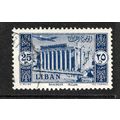Leonardo da Vinci - Head of a Woman / girl - La Scapigliata - art postcard
- Condition : Used
- Dispatch : 2 Days
- Brand : None
- ID# : 137603821
- Quantity : 1 item
- Views : 333
- Location : United Kingdom

- Seller : justthebook (+1703)
- Barcode : None
- Start : Tue 10 Mar 2015 00:31:35 (BST)
- Close : Run Until Sold
- Remain : Run Until Sold
More Listings from This Seller view all
Seller's Description
- Art Postcard
- Work of art title: Head of a Girl [or Head or a Woman or La Scapigliata]
- Artist (if known): Leonardo da Vinci
- Media or other details: painting
- Publisher / Gallery: Parma National Gallery
- Postally used: no
- Stamp & postmark details (if relevant): na
- Size: modern
- Notes & condition details:
NOTES:
Size: 'Modern' is usually around 6in x 4in / 'Old Standard' is usually around 5 1/2in x 3 1/2in. Larger sizes mentioned, but if you need to know the exact size please ask.
All postcards are not totally new and are pre-owned. It's inevitable that older cards may show signs of ageing and use, particularly sent through the post. Any faults other than normal ageing are noted.
Stock No.: A493
------------------------------------------------
Postage & Packing:
Postage and packing charge should be showing for your location (contact if not sure).
No additional charges for more than one postcard. You can buy as many postcards from me as you like and you will just pay the fee above once. Please wait for combined invoice. (If buying postcards with other things such as books, please contact or wait for invoice before paying).
Payment Methods:
UK - PayPal, Cheque (from UK bank) or postal order
Outside UK: PayPal ONLY (unless otherwise stated) please. NO non-UK currency checks or money orders (sorry).
NOTE: All postcards are sent in brand new stiffened envelopes which I have bought for the task. These are specially made to protect postcards and you may be able to re-use them. In addition there are other costs to sending so the above charge is not just for the stamp!
I will give a full refund if you are not fully satisfied with the postcard.
----------------------------------------------
Text from the free encyclopedia WIKIPEDIA may appear below to give a little background information:
*************
The Head of a Woman (also known as La Scapigliata) is a painting by the Italian Renaissance master Leonardo da Vinci, dating from perhaps around 1500 and housed in the Galleria Nazionale di Parma, Italy.
The work is an finished painting, mentioned for the first time in the House of Gonzaga collection in 1627. It is perhaps the same work that Ippolito Calandra, in 1531, suggested to hang in the bedroom of Margaret Paleologa, wife of Federico II Gonzaga. In 1501, the marquesses wrote to Pietro Novellara asking if Leonardo could paint a Madonna for her private studiolo.
The painting, part of the Parmesan collection since 1839, has been dated to Leonardo's mature period, near to the Virgin of the Rocks or The Virgin and Child with St Anne and St John the Baptist.
Leonardo di ser Piero da Vinci (Italian: [leo'nardo da 'vint?i] ( listen); 15 April 1452 – 2 May 1519) was an Italian polymath, painter, sculptor, architect, musician, mathematician, engineer, inventor, anatomist, geologist, cartographer, botanist, and writer. He is widely considered to be one of the greatest painters of all time and perhaps the most diversely talented person ever to have lived.[1] His genius, perhaps more than that of any other figure, epitomized the Renaissance humanist ideal. Leonardo has often been described as the archetype of the Renaissance Man, a man of ""unquenchable curiosity"" and ""feverishly inventive imagination"".[2] According to art historian Helen Gardner, the scope and depth of his interests were without precedent and ""his mind and personality seem to us superhuman, the man himself mysterious and remote"".[2] Marco Rosci states that while there is much speculation about Leonardo, his vision of the world is essentially logical rather than mysterious, and that the empirical methods he employed were unusual for his time.[3]
Born out of wedlock to a notary, Piero da Vinci, and a peasant woman, Caterina, in Vinci in the region of Florence, Leonardo was educated in the studio of the renowned Florentine painter Verrocchio. Much of his earlier working life was spent in the service of Ludovico il Moro in Milan. He later worked in Rome, Bologna and Venice, and he spent his last years in France at the home awarded him by Francis I.
Leonardo was, and is, renowned primarily as a painter. Among his works, the Mona Lisa is the most famous and most parodied portrait[4] and The Last Supper the most reproduced religious painting of all time, with their fame approached only by Michelangelo's The Creation of Adam.[2] Leonardo's drawing of the Vitruvian Man is also regarded as a cultural icon,[5] being reproduced on items as varied as the euro coin, textbooks, and T-shirts. Perhaps fifteen of his paintings have survived, the small number because of his constant, and frequently disastrous, experimentation with new techniques, and his chronic procrastination.[citation needed][nb 1] Nevertheless, these few works, together with his notebooks, which contain drawings, scientific diagrams, and his thoughts on the nature of painting, compose a contribution to later generations of artists rivalled only by that of his contemporary, Michelangelo.
Leonardo is revered for his technological ingenuity. He conceptualised flying machines, an armoured vehicle, concentrated solar power, an adding machine,[6] and the double hull, also outlining a rudimentary theory of plate tectonics. Relatively few of his designs were constructed or were even feasible during his lifetime,[nb 2] but some of his smaller inventions, such as an automated bobbin winder and a machine for testing the tensile strength of wire, entered the world of manufacturing unheralded.[nb 3] He made important discoveries in anatomy, civil engineering, optics, and hydrodynamics, but he did not publish his findings and they had no direct influence on later science.[7]
type=printed postcards
theme=artists signed
sub-theme=art
number of items=single
period=1945 - present
postage condition=unposted
Listing Information
| Listing Type | Gallery Listing |
| Listing ID# | 137603821 |
| Start Time | Tue 10 Mar 2015 00:31:35 (BST) |
| Close Time | Run Until Sold |
| Starting Bid | Fixed Price (no bidding) |
| Item Condition | Used |
| Bids | 0 |
| Views | 333 |
| Dispatch Time | 2 Days |
| Quantity | 1 |
| Location | United Kingdom |
| Auto Extend | No |



 for 1 item(s)
for 1 item(s)
















